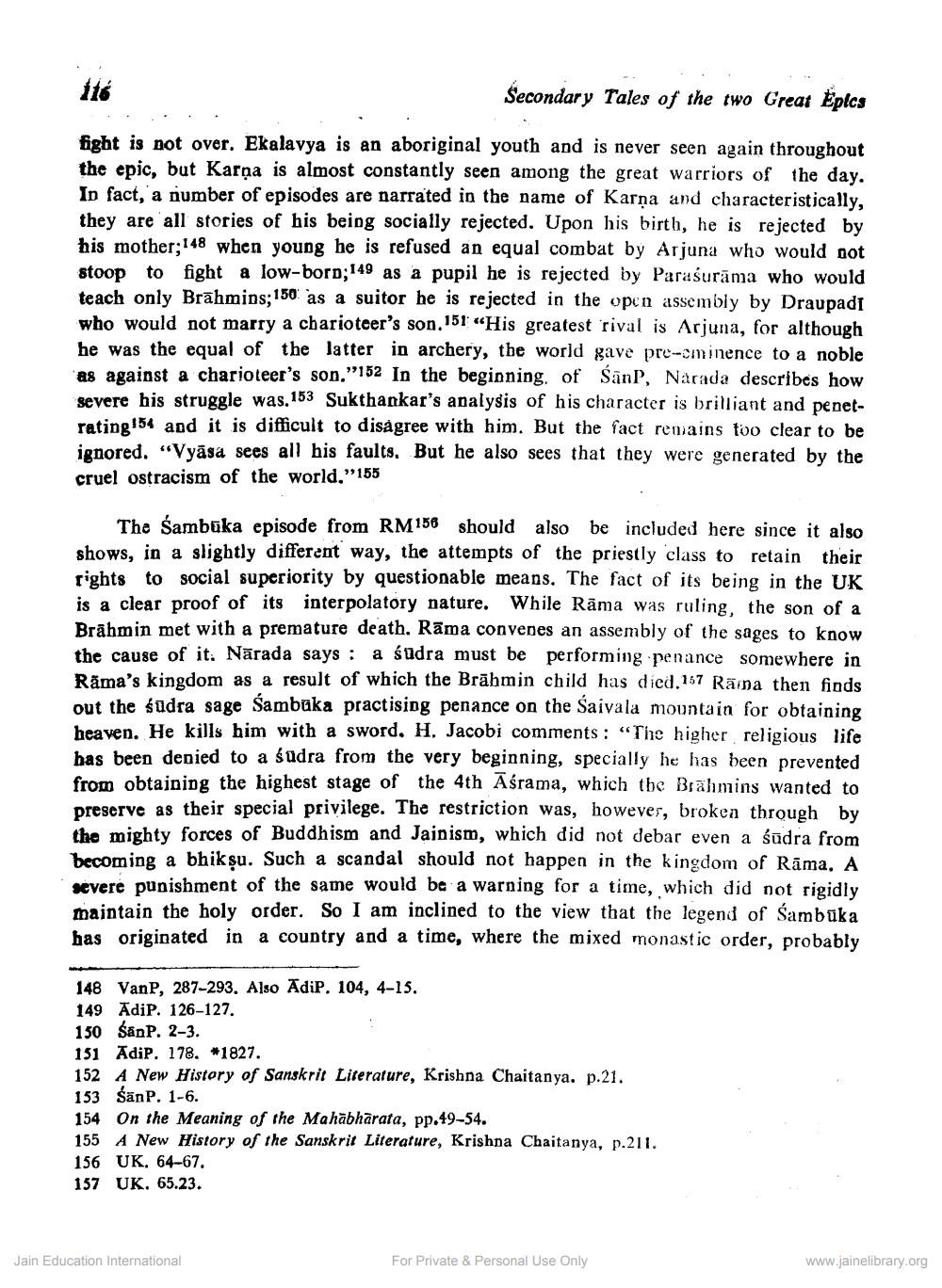________________
Secondary Tales of the two Great Eplcs
fight is not over. Ekalavya is an aboriginal youth and is never seen again throughout the epic, but Karġa is almost constantly seen among the great warriors of the day. In fact, a number of episodes are narrated in the name of Karna and characteristically, they are all stories of his being socially rejected. Upon his birth, he is rejected by his mother;148 when young he is refused an equal combat by Arjuna who would not stoop to fight a low-bord;149 as a pupil he is rejected by Paraśurāma who would teach only Brāhmins; 150 as a suitor he is rejected in the open assembly by Draupadi who would not marry a charioteer's son.151 "His greatest rival is Arjuna, for although he was the equal of the latter in archery, the world gave pre-ominence to a noble as against a charioteer's son."152 In the beginning. of SānP, Narada describes how severe his struggle was.153 Sukthankar's analysis of his character is brilliant and penetrating 154 and it is difficult to disagree with him. But the fact remains too clear to be ignored. “Vyāsa sees all his faults. But he also sees that they were generated by the cruel ostracism of the world."155
The Sambuka episode from RM 156 should also be included here since it also shows, in a slightly different way, the attempts of the priestly class to retain their rights to social superiority by questionable means. The fact of its being in the UK is a clear proof of its interpolatory nature. While Rāma was ruling, the son of a Brāhmin met with a premature death. Rāma convenes an assembly of the sages to know the cause of it. Nārada says : a śudra must be performing penance somewhere in Rāma's kingdom as a result of which the Brāhmin child has died.157 Raina then finds out the sudra sage Sambuka practising penance on the Saivala mountain for obtaining heaven. He kills him with a sword. H. Jacobi comments: “The higher religious life has been denied to a sudra from the very beginning, specially he has been prevented from obtaining the highest stage of the 4th Aśrama, which the Brahmins wanted to preserve as their special privilege. The restriction was, however, broken through by the mighty forces of Buddhism and Jainism, which did not debar even a śūdra from becoming a bhikṣu. Such a scandal should not happen in the kingdom of Rāma, A severe punishment of the same would be a warning for a time, which did not rigidly maintain the holy order. So I am inclined to the view that the legend of Sambuka has originated in a country and a time, where the mixed monastic order, probably
148 VanP, 287-293. Also AdiP. 104, 4-15. 149 AdiP. 126-127. 150 SanP. 2-3. 151 AdiP. 178. *1827. 152 A New History of Sanskrit Literature, Krishna Chaitanya. p.21. 153 ŚänP. 1-6. 154 On the Meaning of the Mahābhārata, pp.49-54. 155 A New History of the Sanskrit Literature, Krishna Chaitanya, p.211. 156 UK, 64-67. 157 UK. 65.23.
Jain Education International
For Private & Personal Use Only
www.jainelibrary.org




